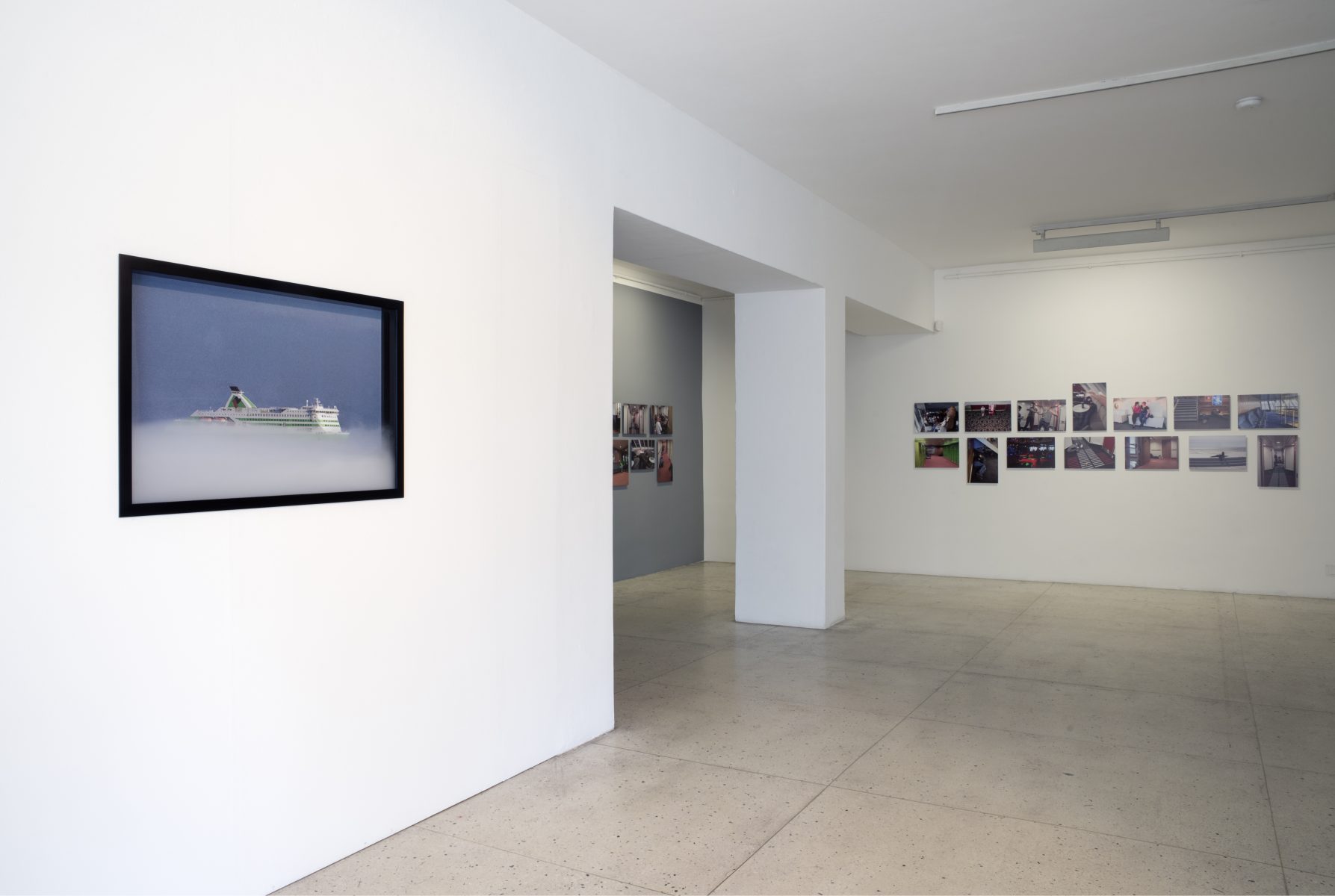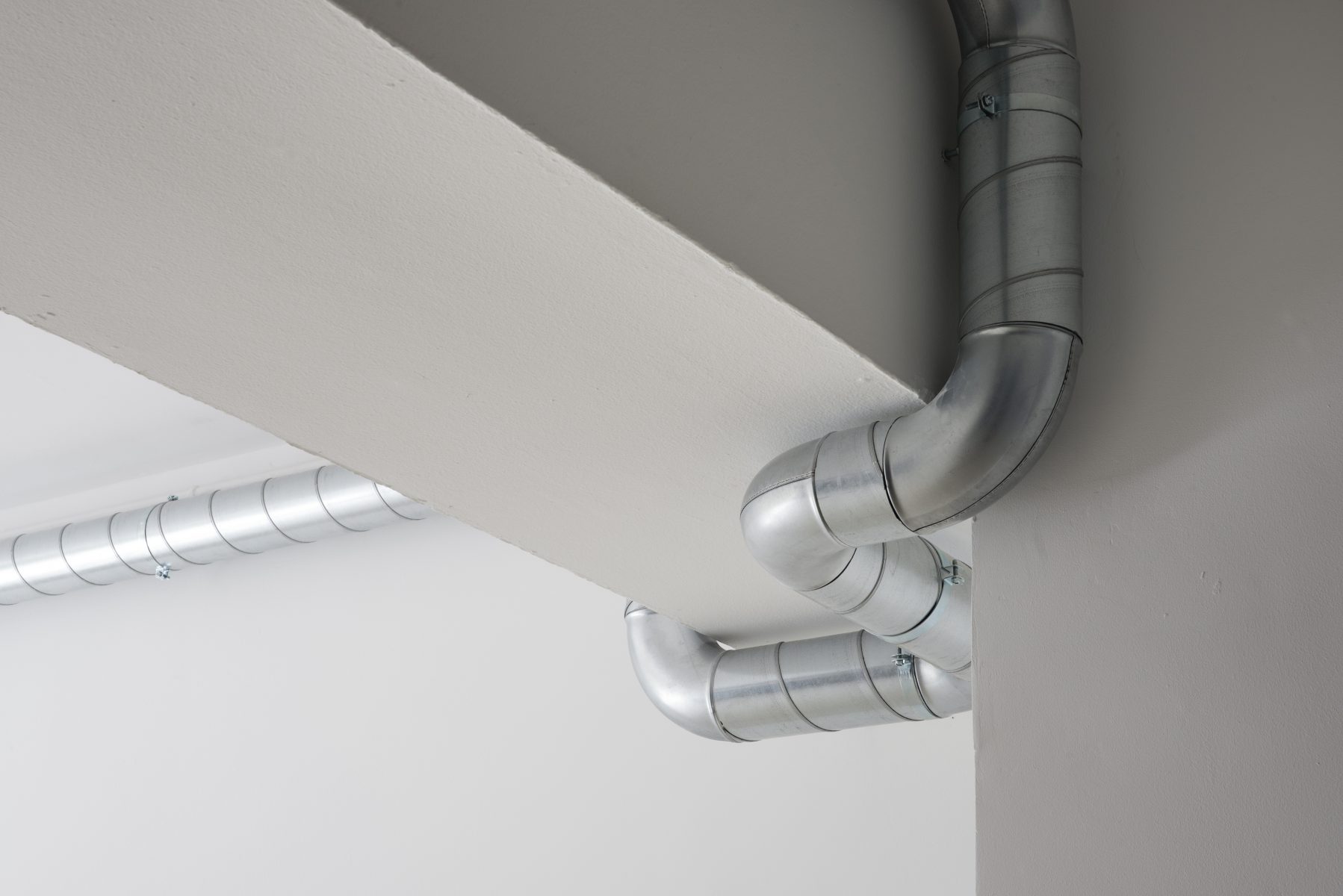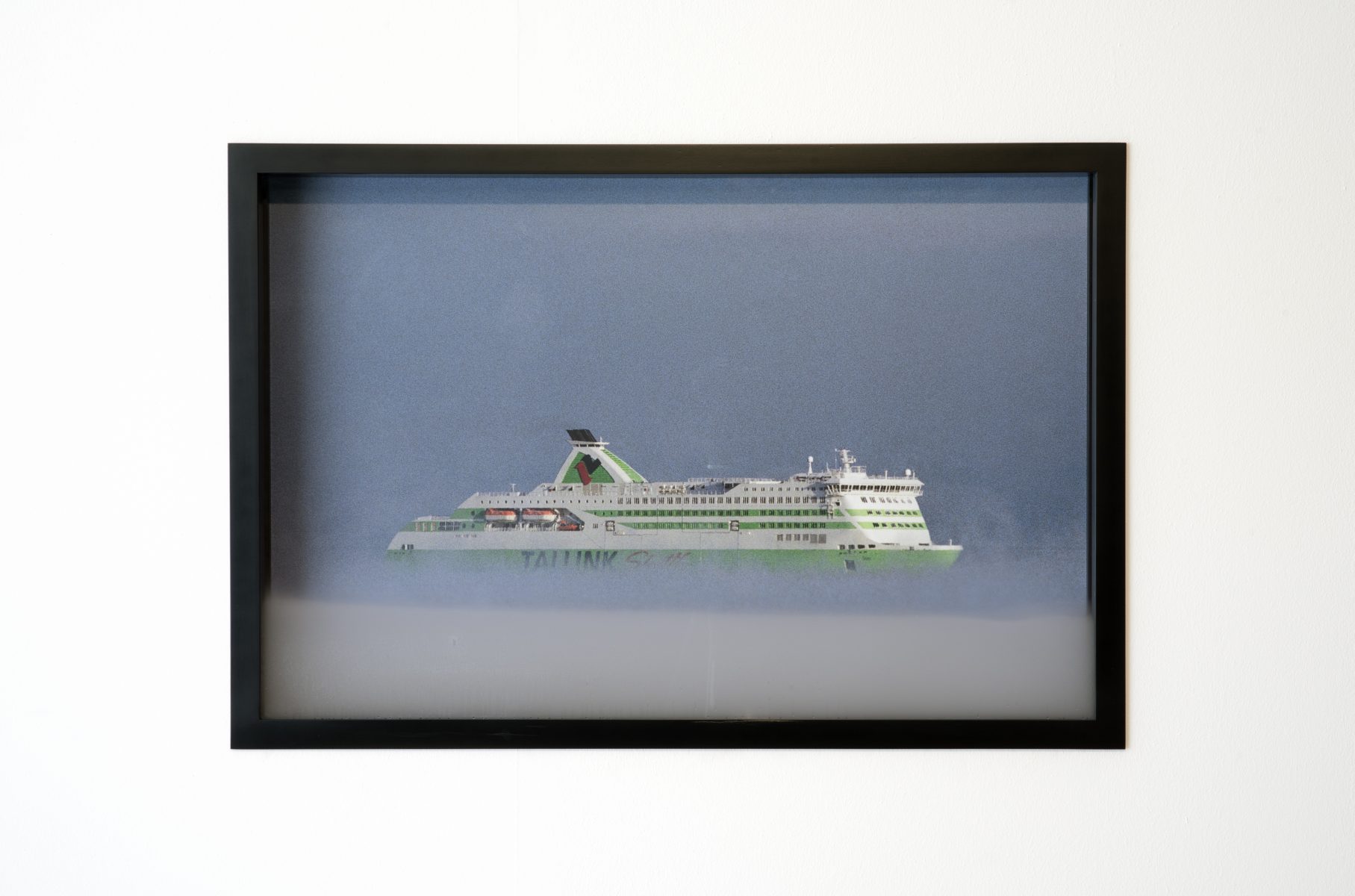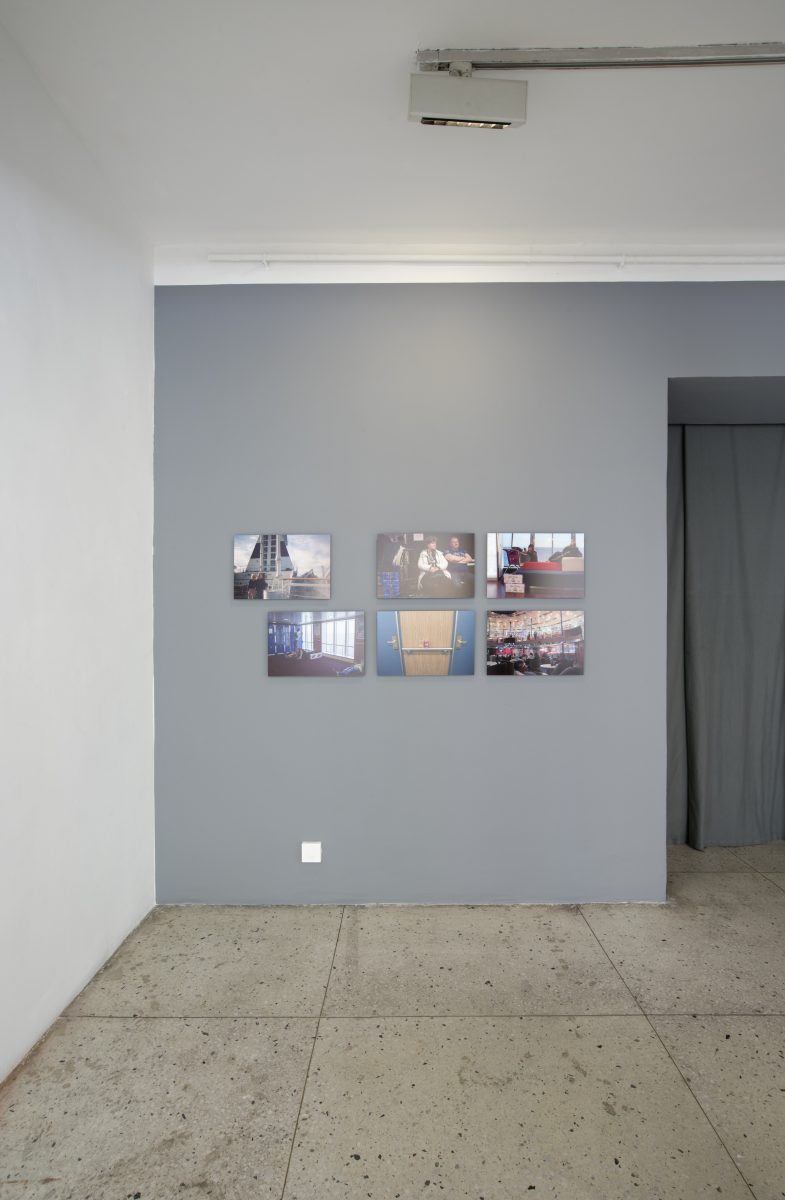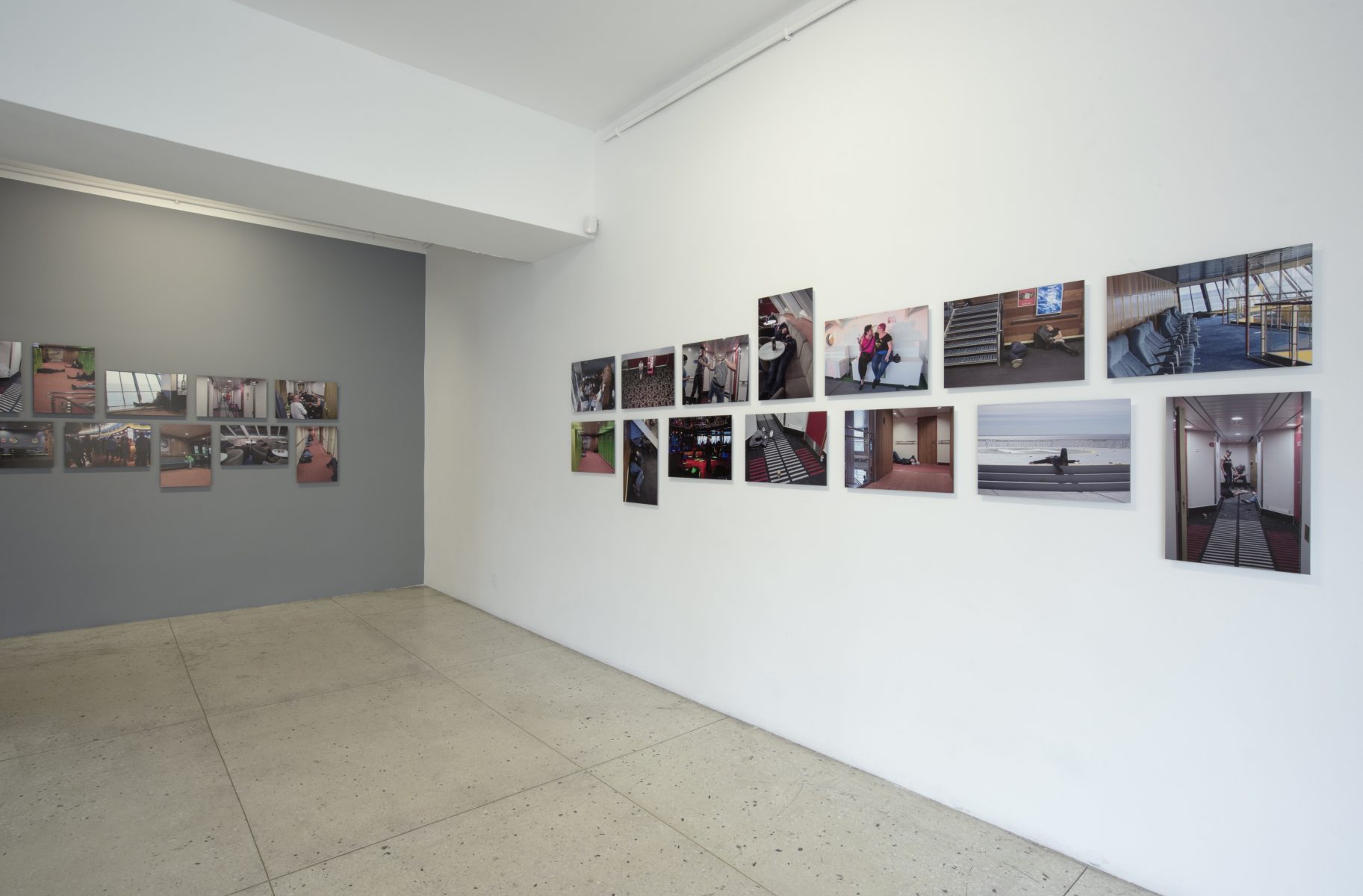Case No 11.Talsinki
Karel Koplimets
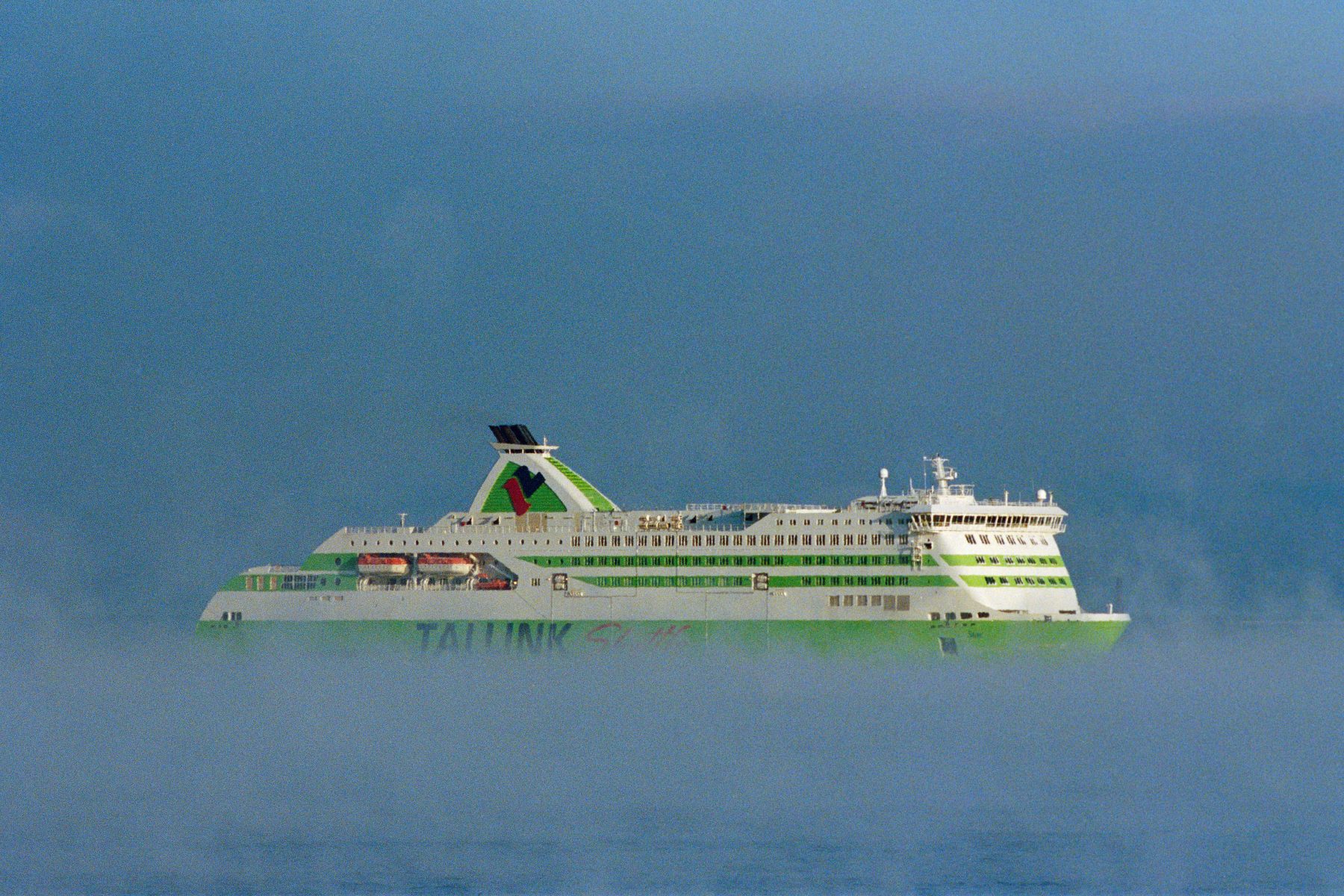
Starting on May 20th, Karel Koplimets’s solo exhibition will be open at the Art Hall Gallery. In it, the artist makes a sharp detour from landscapes that have become bleak and shadowy to the everyday world of people –with little artistic intensification. True, there are some dreams here, but they are carried by a relatively white, relatively large and relatively safe ship – a ship, the better part of which is an invisible memory of the Ship.
The exhibition will last until June 18th.
Using photography and video, Case 11: Talsinki tells the story of the exhausted workers and partying tourists on the ships travelling between Tallinn and Helsinki. None of them instils the resolve of the man or woman maintaining a steady course on the captain’s bridge; but rather a resignation with their situation, which is similar to crouching in the belly of a white whale floating in a glass-walled aquarium.
During his life as a young artist, Karel Koplimets has collaborated productively as a member of the Visible Solutions team, which has supported his need for fantasizing, shifting facts in the real of “it is and isn’t either”, along with walking on the knife-edge between art and life. The effective use of creative skills and databases has added an impression of being “almost real” to the documentary persuasiveness of the installations he has created together with Ivar Veermägi. These experiences have left their mark on Karel Koplimets. Although in his solo shows, he does intensify the bleakness and dread that reigns in the space between belief and fantasy, in the Talsinki story the fear and horror has been banished. Here fact-based real life rules, to which a ship cloaked in a fairy-tale-like and mysterious mist adds an unexpected, and unfoundedly beautiful, dimension.
We all know that tens of thousands of Estonians work in Finland and as cheap labour impact the local economy in various ways. We all know that of the Finnish kinsmen that make millions of trips to Estonia every year 80% depart with a load of alcohol. They too impact our economy. This data can be established by statistics, and conclusions drawn by socio-economic analysis. And yet, somewhere here, next to us, and in us, live boys and girls who are now grown up, but who remember the excitement they felt when they took their first trip on a ship; the blinding wonderland that opened on the boundary between two worlds as the vessel floated in the middle of the sea. That which followed was a story of the dimming and vanishing of that wonder.
We would like to thank: Estonian Cultural Endowment, Ministry of Culture, Tallinn Department of Culture, Veinisõber.



